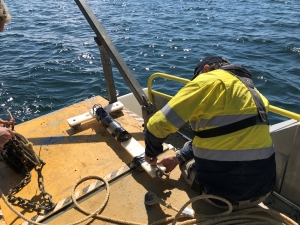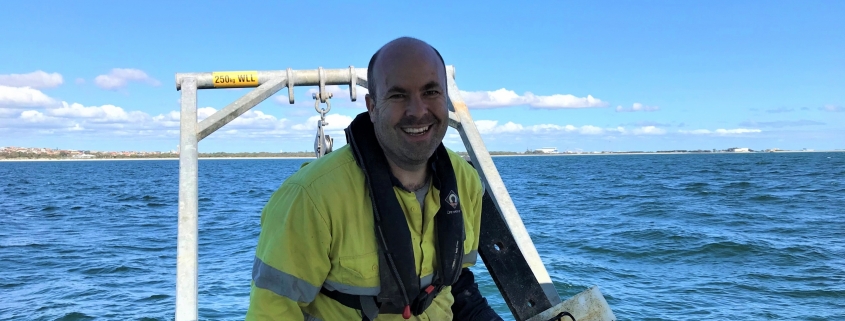Underwater symphony of noisy shrimp and whistling dolphins
Waves crashing, boats motoring and seabirds squawking are what we typically hear at the beach.
But a WAMSI research team at Cockburn Sound is listening to the soundscape underwater and recording everything from the ‘popping’ noise of tiny snapping shrimp to fish sounds and whistling dolphins.
Vessels travelling across the water are also picked up.
Dr Iain Parnum, from Curtin University’s Centre for Marine Science and Technology, is part of a research team that has been using underwater microphones, known as hydrophones, which are linked to a recording device and lowered into the water.
“We put them in the water and leave them on the seafloor for several months at a time, so we have this continual data,” Dr Parnum said.
“We are trying to understand the underwater soundscape of Cockburn Sound.”
“We want to characterise different sounds that can be heard, how loud they are and how that soundscape changes through the year.”
He said it was also useful for locating different species and information will be shared with other researchers involved in the WAMSI Westport Marine Science Program.
“Probably in coastal areas like this, one of the main sounds is anthropogenic or human caused.
“We are monitoring places where they have typically been finding dolphins but also areas where they haven’t. We want to know what the overall sound levels in those areas are, if they are overwhelming and making it difficult for dolphins to communicate.”
“Everyone sees dolphins and it’s always nice to see them, but you also hear them chatting away underwater.
“We need to understand what the baseline sounds in the Sound are.”
The team is yet to record mulloway, but Dr Parnum said they’re a fish that has a distinctive sound.
“Sometimes if there’s enough of them, they like to gather together to do choruses particularly after sunset.”

Research team member Malcolm Perry works on underwater sound recording equipment.
“That is something we have seen in other sites,” Dr Parnum said.
Other WAMSI Westport Marine Science Program scientists are doing related research on the hearing physiology of animals in the area including little penguins, and the behavioural response of fishes to underwater noise.

